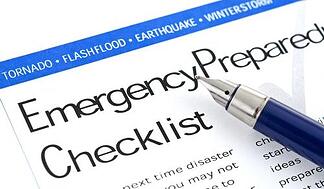Reduce the overall contact you have with harmful lung irritants by applying the tips below in all your most common environments!
Know Common COPD Irritants
Chronic obstructive pulmonary disease (COPD) symptoms can be exacerbated or caused to flare-up, which is why in regards to your health it is important to be aware of the common COPD irritants:
- Smoking Cigarettes
- Second Hand Cigarette Smoke
- Anxiety/Stress
- Car Pollution
- Humidity
- Extremely Cold Weather
- Perfumes/Cologne
- Air Pollution
Learn your Personal COPD Irritants
As there are numerous irritants and conditions that can worsen COPD symptoms, every case of COPD is different in each person, so you may have a specific symptom excessively while another patient not so much.
With that said, it is extremely important that you learn your specific irritants.
The best way to do this is jot down some notes in a notebook of specific scenarios or environments you were in that caused a specific flare-up.
To better take notes ask yourself these questions, and record the answers:
- When symptoms escalated, where were you?
- What activities were you doing?
- Which specific symptoms increased, and were there a presence of new ones?
- What did you do to relax or eliminate those symptoms?
- Are the ways to avoid this specific irritant from here on out?
Make your Home a COPD Safe Spot
Everywhere you go in the outside world you will be faced with pollution and other lung irritants.
Which is why you should strive to have your home be free of irritants.
So of all places you can breathe clearly at home without the fear of flare-ups.
The easiest way of doing this is go room to room ensuring they are COPD friendly, some of the most efficient ways of COPD proofing your house include:
- Wood Floors - wood floors collect less dust than carpet
- Fake Fireplace - these burn gas instead of wood logs, which emit smoke and other irritants
- Easy on the Lungs, Basic Household Cleaners - avoid cleaners with strong aromas of chemicals, use baking soda and vinegar instead
- Faintly Scented Personal Products - use unscented products, as scented products cause flare-ups in many patients
- Yearly Serviced HVAC System - air conditioners, furnaces, as well as the duct work can all gather dust and spew it back into your household air
Have a Plan for Emergencies 
Life is full of the unexpected and living with COPD makes preparing for unforeseen emergencies that much more important.
Having an emergency plan will help you and your loved ones better take action in the event of a symptomatic flare-up or other problems when an emergency occurs.
- Power Outages - Prepare yourself by having additional batteries on hand in the case of an emergency power outage, let your energy company know you are an oxygen patient which will give you priority when restoring areas without power.
- Flare-Ups - Talk to your doctor about when you should contact emergency services, when and how much of a fast acting medication you should use, or if additional medications are needed.
Keep a prepared action plan in a convenient location such as posted on the refrigerator, so in the event of an emergency loved ones can easily access it and begin to put it into action.
Be sure to include all your doctors contact information, a list of all medications you are currently taking, as well as directions to the nearest hospital.




